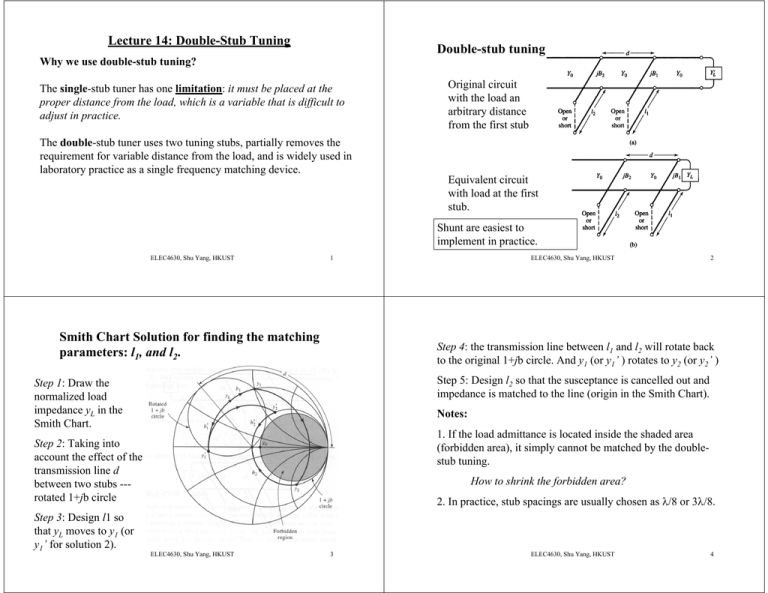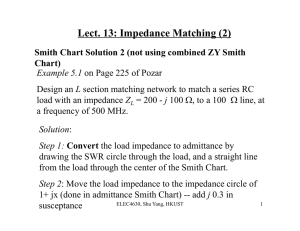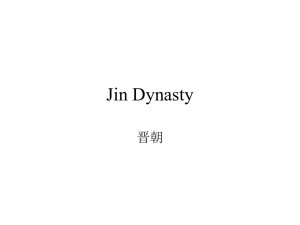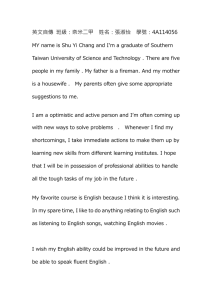Lecture 14: Double-Stub Tuning Double
advertisement

Lecture 14: Double-Stub Tuning Double-stub tuning Why we use double-stub tuning? The single-stub tuner has one limitation: it must be placed at the proper distance from the load, which is a variable that is difficult to adjust in practice. Original circuit with the load an arbitrary distance from the first stub The double-stub tuner uses two tuning stubs, partially removes the requirement for variable distance from the load, and is widely used in laboratory practice as a single frequency matching device. Equivalent circuit with load at the first stub. Shunt are easiest to implement in practice. ELEC4630, Shu Yang, HKUST Smith Chart Solution for finding the matching parameters: l1, and l2. 2 Step 4: the transmission line between l1 and l2 will rotate back to the original 1+jb circle. And y1 (or y1’ ) rotates to y2 (or y2’ ) Step 5: Design l2 so that the susceptance is cancelled out and impedance is matched to the line (origin in the Smith Chart). Step 1: Draw the normalized load impedance yL in the Smith Chart. Notes: 1. If the load admittance is located inside the shaded area (forbidden area), it simply cannot be matched by the doublestub tuning. Step 2: Taking into account the effect of the transmission line d between two stubs --rotated 1+jb circle Step 3: Design l1 so that yL moves to y1 (or y1’ for solution 2). ELEC4630, Shu Yang, HKUST 1 How to shrink the forbidden area? 2. In practice, stub spacings are usually chosen as λ/8 or 3λ/8. ELEC4630, Shu Yang, HKUST 3 ELEC4630, Shu Yang, HKUST 4 Example 5.4 on Page 237 of Pozar Solution (cont.) Match a load impedance ZL = 60 - j 80 Ω to a 50 Ω line using a double-stub tuner. The stubs are opencircuited are spaced λ/8 apart. The match frequency is 2 GHz. 3. Find the susceptance of the first stub, b1 = 1.314 or b1 = −0.114 4. Rotate the 1+jb circle to the original location, and have y2 = 1 − j 3.38 1. y L = 0.3 + j 0.4 or 2. Construct the rotated 1+jb circle. 5 Solution 1 has a much narrower bandwidth than solution 2 Read page 238240 of Pozar for analytic solution. 7 ELEC4630, Shu Yang, HKUST b2 = 3.38 ' Solution: ELEC4630, Shu Yang, HKUST 5. Then the susceptance of the second stub should be y2' = 1 + j1.38 or b2' = −1.38 6. The lengths of the open-circuited stubs are l1 = 0.146λ l2 = 0.204λ or l = 0.482λ l2' = 0.350λ ' 1 ELEC4630, Shu Yang, HKUST 6






